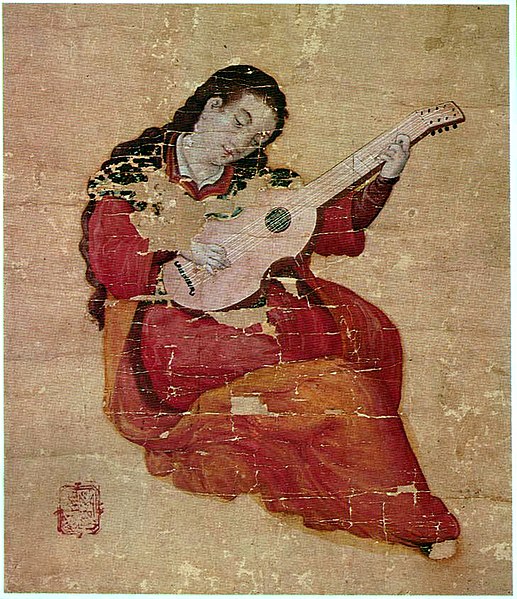The term violone can refer to several distinct large, bowed musical instruments which belong to either the viol or violin family. The violone is sometimes a fretted instrument, and may have six, five, four, or even only three strings. The violone is also not always a contrabass instrument. In modern parlance, one usually tries to clarify the 'type' of violone by adding a qualifier based on the tuning or on geography, or by using other terms that have a more precise connotation. The term violone may be used correctly to describe many different instruments, yet distinguishing among these types can be difficult, especially for those not familiar with the historical instruments of the viol and violin families and their respective variations in tuning.
Violone
A "G violone" by Ernst Busch, in Berlin
More shots of the "G violone" by Ernst Busch
Six-string "G violone" or "A violone" c. 1630 by Ernst Busch, in Stockholm
The viol, viola da gamba, or informally gamba, is any one of a family of bowed, fretted, and stringed instruments with hollow wooden bodies and pegboxes where the tension on the strings can be increased or decreased to adjust the pitch of each of the strings. Frets on the viol are usually made of gut, tied on the fingerboard around the instrument's neck, to enable the performer to stop the strings more cleanly. Frets improve consistency of intonation and lend the stopped notes a tone that better matches the open strings. Viols first appeared in Spain and Italy in the mid-to-late 15th century, and were most popular in the Renaissance and Baroque (1600–1750) periods. Early ancestors include the Arabic rebab and the medieval European vielle, but later, more direct possible ancestors include the Venetian viole and the 15th- and 16th-century Spanish vihuela, a six-course plucked instrument tuned like a lute that looked like but was quite distinct from the four-course guitar.

Spanish instruments from before the name viol or vihuela were coined, played with a bow. From Commentary on the Apocalypse, Codice VITR 14.1, "second third of 10th century".
Detail from a painting by Jan Verkolje, Dutch, c. 1674, Elegant Couple (A Musical Interlude). The theme is similar to the classic Music Lesson genre, and features a bass viol, virginal, and cittern (in the woman's hand, out of frame in this detail; see full image). This image highlights the domestic amateur class of viol players.
Late 16th or early 17th-century viol from a Japanese painting. Has four courses of strings.
Painting by Reza Abbasi c. 1634, showing a musician dressed in European clothing, playing what may be a viol. The instrument has Persian-style soundholes and a thinner neck than the instrument in the Japanese painting.








